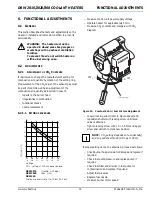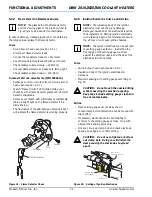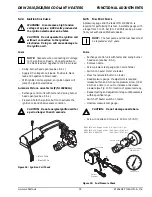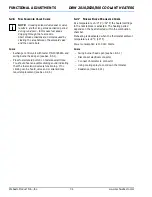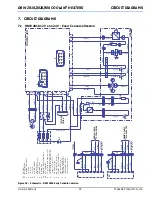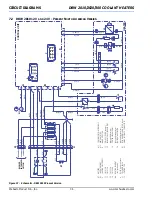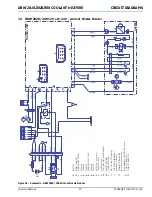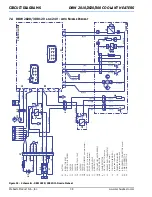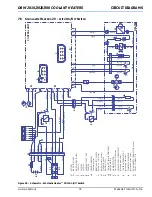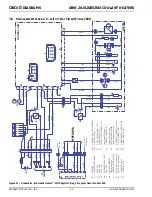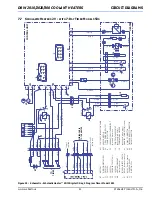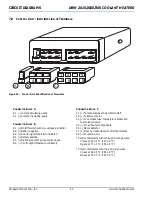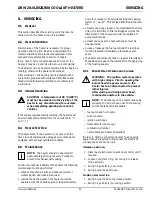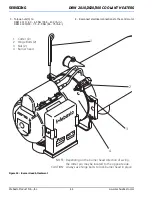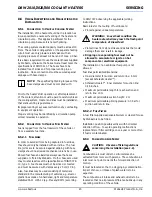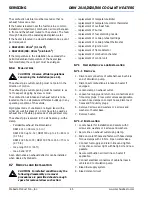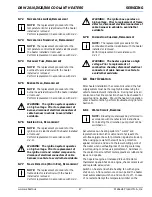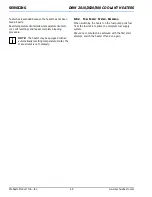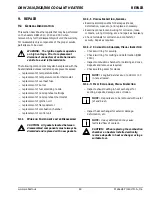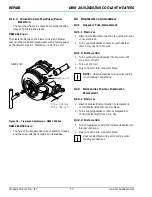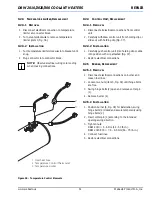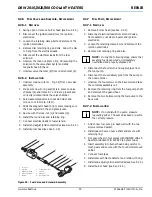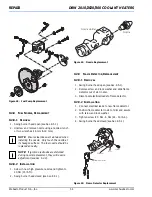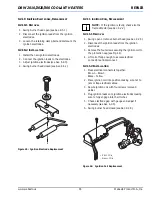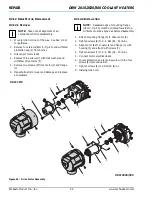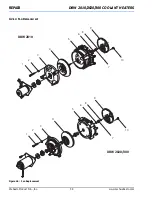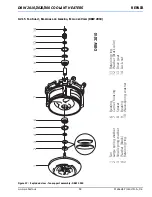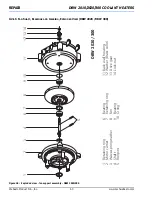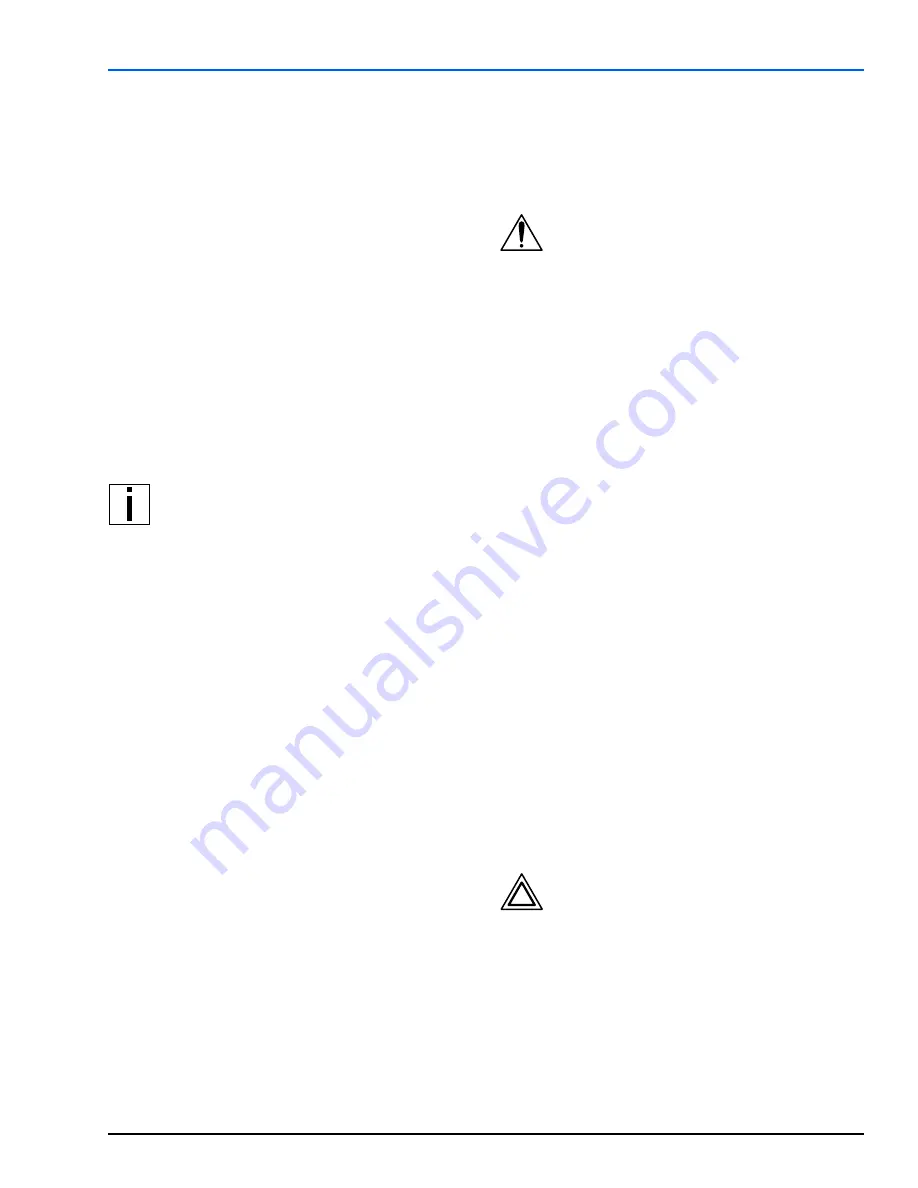
www.webasto.us
45
Webasto Product N.A., Inc.
DBW 2010/2020/300 COOLANT HEATERS
SERVICING
8.6
V
ISUAL
I
NSPECTIONS
AND
R
EGULATIONS
FOR
I
NSTALLATION
8.6.1
C
ONNECTION
TO
V
EHICLE
C
OOLING
S
YSTEM
The installation of the heater should be in a location as
low as possible to ensure self-venting of the heater and
circulation pump. This applies in particular for the
circulation pump because it is not self-priming.
The cooling system coolant capacity must be at least 10
liters. The vehicle cooling system or the separate heating
circuit must use only pressure relief valves with an
opening pressure of at least 0.4 bar and of max. 2.0 bar.
It is a basic requirement to use the coolant hoses supplied
by Webasto, otherwise the hoses must at least meet the
specifications of DIN 73411. The hoses have to be
installed free of kinks and for proper venting in an
inclination. Hose connections must be secured against
slippage with hose clamps.
NOTE:
The specified tightening torques of the
hose clamps used must be complied with.
Prior to the heater’s first operation or after replacement
of the coolant, attention must be paid to carefully bleed
the cooling system. Heater and lines must be installed so
that static venting is guaranteed.
Improper venting may cause malfunctions by overheating
in equipment operation.
Proper venting may be identified by a circulation pump
almost noiseless in operation.
8.6.2
C
ONNECTION
TO
V
EHICLE
F
UEL
S
YSTEM
Fuel is tapped from the fuel reservoir of the vehicle or
from a separate fuel tank.
8.6.2.1 F
UEL
L
INES
In order to avoid air from being captured in fuel lines,
they should only be installed with an incline. The fuel
line joints are to be secured against slipping with hose
clamps should no screwed mechanical unions be in use.
Should fuel hoses be installed always use the hoses
supplied or offered by Webasto. If other hoses are used
they must at least meet the specifications of DIN73379-
1C; type 3. Fuel hoses must not be kinked or twisted
and must be secured with clamps every 25 cm (10 in.).
Also, fuel lines may be used consisting of materials
standard in the manufacturing of vehicles, e.g. steel or
plastic lines made of unhardened, light and temperature
stabilized PA11 or PA12 (e.g. Mecanyl RWTL) according
to DIN 73378 observing the applicable jointing
instructions.
Basic rules for the routing of fuel lines are:
• Protect against undue temperatures.
WARNING: In overheat condition the
heater outer shell may reach the flash point
temperature of Diesel fuel!
• Protect lines from stone strikes and debris that could
damage them and result in leakage.
• Dripping or evaporating fuel must not be
allowed to accumulate or ignite on hot
components or electrical equipment.
The installation of an additional fuel pump is not
allowed.
Fuel lines permissible dimensions:
• Inner diameter for suction and return line: 6 mm
(except Scholastic Heater™).
• Scholastic Heater™ inner diameter for suction line:
3/16 inches.
• Maximum permissible length for each suction and
return line: 10 m
• Maximum permissible suction height: 2 m
• Maximum permissible priming pressure: 0.3 bar for
suction and return line.
8.6.2.2 F
UEL
F
ILTER
A fuel filter supplied as deliverable item or cleared for use
by Webasto is to be fitted.
Installation position possibly vertical with horizontal
direction of flow. To avoid operating malfunctions
replace filter or filter cartridge once a year or more often
if fuel is contaminated.
8.6.3
C
OMBUSTION
A
IR
S
UPPLY
CAUTION: Observe official regulations
concerning the installation (see 1.6).
Combustion air must under no circumstances be
extracted from rooms with persons. The combustion air
inlet must not point towards the forward direction of
motion.
It must be located so that no clogging by contamination,
impact of snow, or intake of splash water is to be
expected.
The combustion air intake and exhaust outlet is to be
located so that no air pressure difference builds up in any
operating condition of the vehicle.

